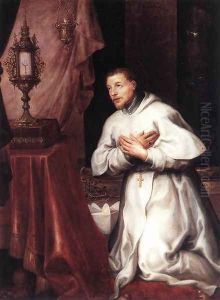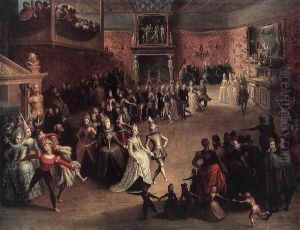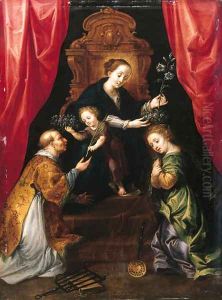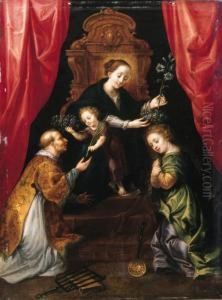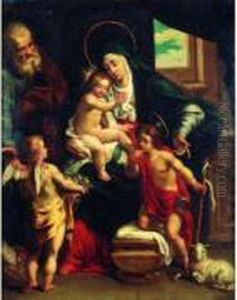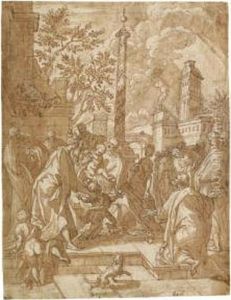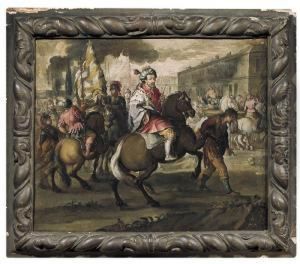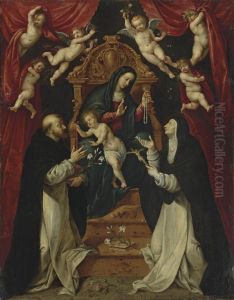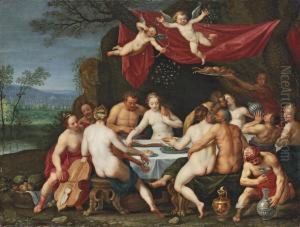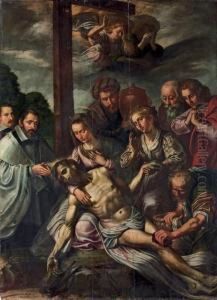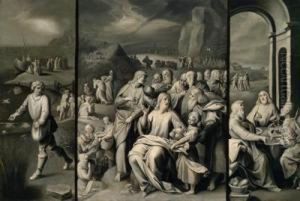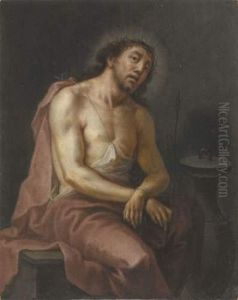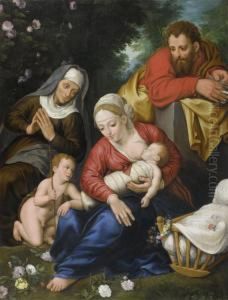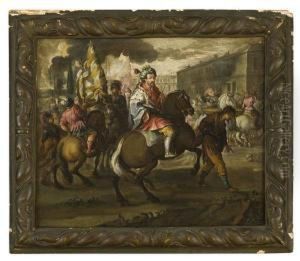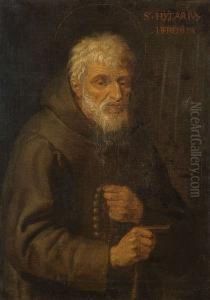Marten Pepijn Paintings
Marten Pepijn was a prominent Flemish painter born in 1575 in Antwerp, a city that was then part of the Spanish Netherlands. His life and career were deeply intertwined with the rich artistic traditions of the Flemish Renaissance and Baroque periods. Pepijn's work is characterized by its detailed execution, vibrant colors, and often religious themes, reflecting the Counter-Reformation's influence on art during this time.
Pepijn received his artistic training in the vibrant cultural atmosphere of Antwerp, a city known for its flourishing arts scene. He became a master in the Antwerp Guild of Saint Luke in 1596, marking his official recognition as an accomplished artist. Throughout his career, Pepijn was deeply influenced by the works of Peter Paul Rubens, another towering figure of Flemish art. Although less known internationally than Rubens, Pepijn's contributions to Flemish art are significant, particularly in religious and historical paintings.
His works were mostly commissions for local churches and monasteries, where his skill in depicting biblical scenes was highly valued. Pepijn's paintings are noted for their emotional depth and the use of light to highlight the spiritual elements of his subjects. His mastery in portraying the human form and his ability to convey narrative through composition were remarkable.
In addition to his religious works, Marten Pepijn also painted portraits and historical scenes, showcasing his versatility as an artist. His art provides insight into the cultural and religious milieu of his time, serving as a window into the 17th-century Southern Netherlands.
Despite his success, details about Pepijn's personal life remain relatively obscure, a common situation for many artists of his era. After a long and productive career, Marten Pepijn passed away in 1643 in Antwerp. Today, his works can be found in various museums and collections, where they continue to be appreciated for their beauty and historical value.
